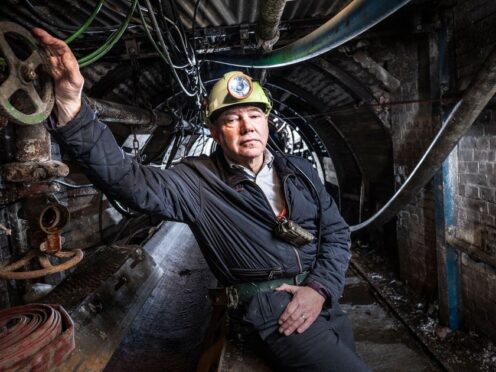
It never crossed Shaun McLoughlin’s mind that the strike would last for a year when he walked out with thousands of other mineworkers in March 1984.
Mr McLoughlin was 22, had been working in the industry for five years, just got married and done what he had been advised, bought a house with the biggest mortgage he could afford.
When he signed up to work at the pit at the age of 16, following his dad and older brother, he was told it was a “job for life”.
But, even though he was working as a mining craft apprentice at one of the most modern pits in Europe, Kellingley, near Selby, the mood had changed by 1984 to one of fear for the future of every colliery.
It was the announcement of plans to close 20 pits which appeared to confirm the miners’ worst fears and provoked the year-long walkout.

Mr McLoughlin, now 62, told the PA news agency: “The mood was really bitter about the pit closure programmes.
“Even at Kellingley, miners didn’t feel safe.
“I was always worried the pit was going to close.”
He said Kellingley’s miners were solid when the strike was called.
“The mood was that everybody would stick together.
“I think everyone thought it was going to be another 1974 and we’d win the strike.”
Asked if he ever thought he would be out for a year, he said: “No. We never thought that at all when we came out on strike.
“We thought something like eight weeks, 12 weeks something like that. We thought we’d have won and have been back at work.”
Mr McLoughlin said it eventually dawned on him the “writing was on the wall” when it became clear there was no unity across the country, with the Nottinghamshire miners working on, and that Margaret Thatcher’s government had stockpiled huge amounts of coal.

He said: “That was a big disappointment for all the Yorkshire lads.
“There’s an old saying in mining that unity is strength and we got let down, basically.
“But that’s history now, isn’t it?”
He said: “When you look back now, they’d been preparing for quite a while had the government, stockpiling coal.
“They chose a time and they provoked the NUM (National Union of Mineworkers) into this action.
“It was never going to be a quick victory.
“They’d planned it well.”
Mr McLoughlin, who first went down the pit in 1977 aged 16, ended up as the mine manager at Kellingley when it was the last deep coal mine in the UK to close, in 2015.
He now works as mine director at the National Coal Mining Museum, which is at the former Caphouse Colliery, and the only place in England where visitors can still go down a pit.
He was living in the pit community of Townville, near Castleford, at the time of the strike.
“I was 22,” he said.
“I’d just got married the year before.
“I’d bought a house and, like many people at the time, you took as big a mortgage as you could afford.
“Kellingley was paying decent wages so, obviously, when the strike came along it was a big shock.”
Mr McLoughlin said his brother was a miner who was married with a mortgage, as was his father-in-law and three brothers-in-law.
Fortunately, he said, his father was a mine official who was still being paid and was able to help-out his extended family.
And Mr McLoughlin managed to pick up some work on building sites.
But he was still left thousands of pounds in debt and later found his building society had added on 10 years to his mortgage term to compensation for the strike freeze.
He said: “It was a struggle. The house I bought had coal-fired central heating. We had no immersion heater. I remember that vividly.
“So, you had no hot water unless you were running your fire. The bit of coal I’d got you just tried to keep it to get your bit of hot water.
“They were tough times.”
Mr McLoughlin said a spate of recent documentaries on the strike had rekindled memories.
He said: “It brings it all back just how brutal it was.
“You can’t condone the throwing of the stones and bottles and everything but you also can’t condone the police action as well.
“The way they dealt with it, it was shocking and I’m sure, in this day and age, it wouldn’t be allowed to go uninvestigated.”
Mr McLoughlin said the mood was sombre when the decision was made to end the strike in March 1985.
He said: “Everybody had had enough because it caused so much animosity within families and everything.
“Brothers were against brother.
“I’ve known people who ended up splitting up with wives and partners during the strike because partners could take any more, because it was that hard.”
Mr McLoughlin said: “It should definitely be remembered.
“It’s a piece of history.
“It’s something that happened and it should never be forgotten.
“Basically, it should never happen again.
“People going 12 months without wages and that kind of stress and anxiety on families should never happen again.”
He said: “The pit villages have gone.
“You just see the deprivation now in the mining villages.
“In Castleford, every shop is a charity shop.
“It used to be a real thriving place.”

Enjoy the convenience of having The Sunday Post delivered as a digital ePaper straight to your smartphone, tablet or computer.
Subscribe for only £5.49 a month and enjoy all the benefits of the printed paper as a digital replica.
Subscribe